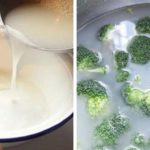Two Familiar Fruits Prone to Pesticide Contamination
Oranges
Typically, oranges are classified into two varieties: yellow oranges and green oranges. Oranges that have been treated with chemicals often have a smooth, blemish-free peel with a vibrant color and rarely have seeds. Oranges in Vietnam tend to have a paler color, less shine, and thicker peel.

Choose oranges that are similar in size and avoid those with shiny, waxy peels as they may be treated with chemicals. Illustrative image.
When you cut open an orange, the flesh should have a slightly pale color and lack a strong fragrance. Notably, some imported orange varieties are seedless, have an intense sweetness, and the segments may feel slightly soggy.
To purchase high-quality, chemical-free oranges, homemakers should keep in mind that Vietnamese oranges, including those from Ha Giang or the mandarin variety, tend to have rougher and thicker peels. The peels may also have blemishes, and the fruits are generally smaller with seeds.
Ha Giang oranges, in particular, have seeds and when ripe, they turn yellow with thick, sweet-smelling flesh. The mandarin variety has a round shape, larger size, thick, rough, and uneven green peel, although the color is not uniform.
If you’re buying oranges at a market, you may come across some that have a sun-kissed appearance, which is not as aesthetically pleasing. In contrast, the water orange variety is noticeably smaller than the mandarin oranges, with a lighter green peel, thinner skin, and an irregular shape, but they yield a significant amount of juice.
To safeguard your health and that of your family, refrain from purchasing fruits with bruises or soft spots, even if the rest of the fruit appears fresh.
When buying fruits, be cautious of any abnormalities such as fruits that are overly green or unnaturally uniform in ripeness. Regardless of the type of fruit, it is essential to thoroughly wash and peel them before consumption.
Apples – A Favorite Fruit but Prone to Pesticide Use
Apples are a popular fruit, especially among children. However, the prevalence of apples with unclear origins in the market has made homemakers more cautious about this fruit.
Apples that have been treated with chemicals often appear round, with smooth, shiny peels, and are packaged in mesh bags.

Opt for apples with red and yellow hues and a hint of red blush on the peel. Illustrative image.
Many people believe that the riper and redder the apple, the better. However, in reality, the less red an apple is, the sweeter and more delicious it tends to be. The natural color of apples should be a mix of red and yellow, with a hint of red blush on the peel. These apples are not only crisp and tasty but also juicy.
In the market, you may come across apples with an intensely red color. If they are not the red apple or sugar apple varieties, they have likely been treated with dye to enhance their appearance.
When selecting apples, choose those with seeds and thicker peels, as these tend to be of better quality. Avoid apples without stripes or with unevenly distributed stripes, as they are often less juicy, lacking in sweetness and fragrance.
How to Clean Fruits Before Consumption
To protect your health, it is crucial to wash fruits and vegetables properly. This not only removes dirt but also helps eliminate chemical residues. Therefore, when washing fruits, soak them in clean water, a 5% salt solution, or rice washing water for about 15 minutes, then rinse each fruit thoroughly under running water. Consistently doing so will help neutralize and remove a significant amount of chemicals from the produce.
– Place fruits and vegetables under cold running water in a sink or basin.
– Use paper towels or specialized brushes to clean the produce.
– After washing, dry the fruits with a clean cloth or paper towel.
According to Nguoiduatin
Risks of Health Issues from Pesticides Rise After Washing Certain Vegetables
Expert Advice on How to Identify Unsafe Food
Are you aware of how to inspect food for possible safety risks? With the presence of food products from unclear origins and chemicals used as preservatives, it is important to be vigilant in selecting food items for our families. Join us in the Food Tips section to take a closer look at how to select safe and healthy food for our families!







































